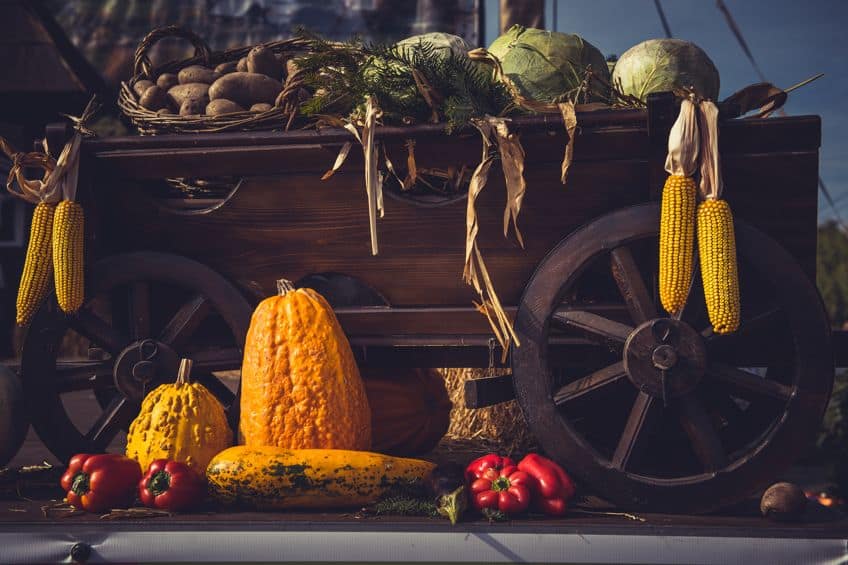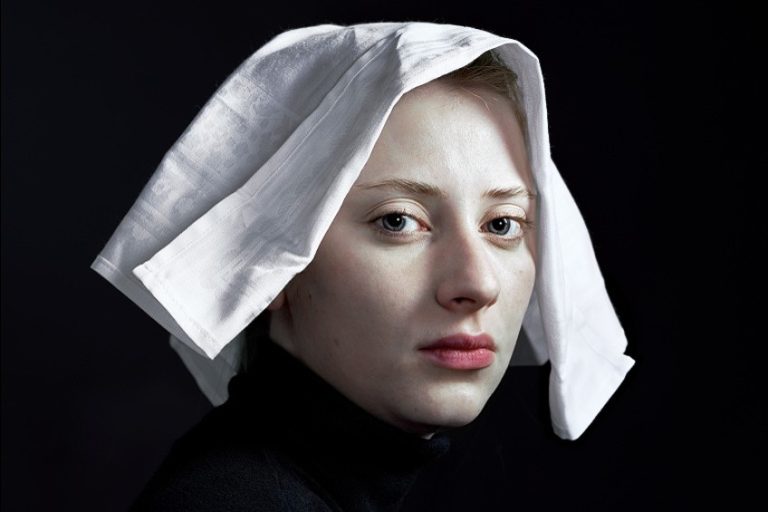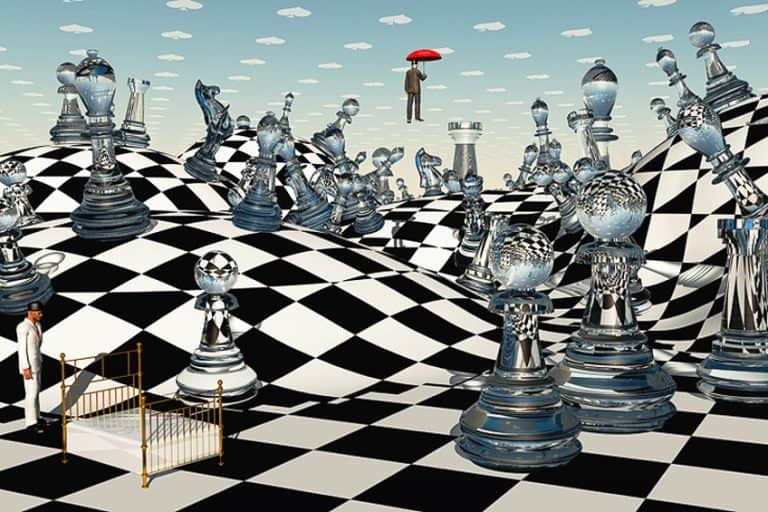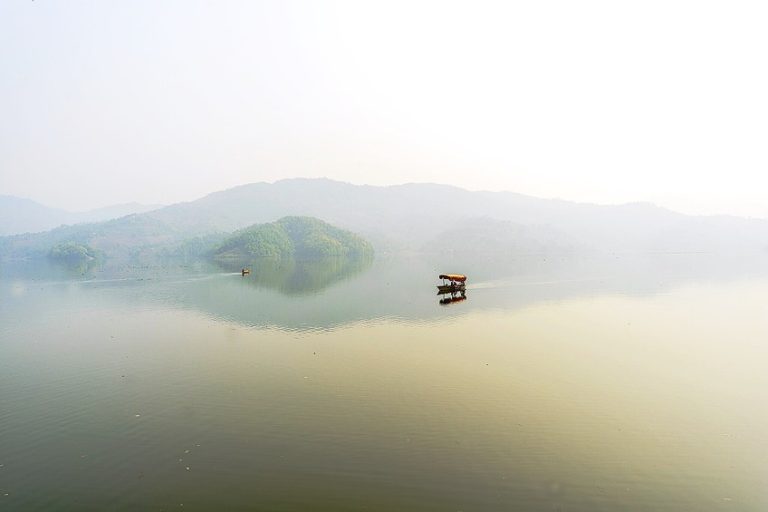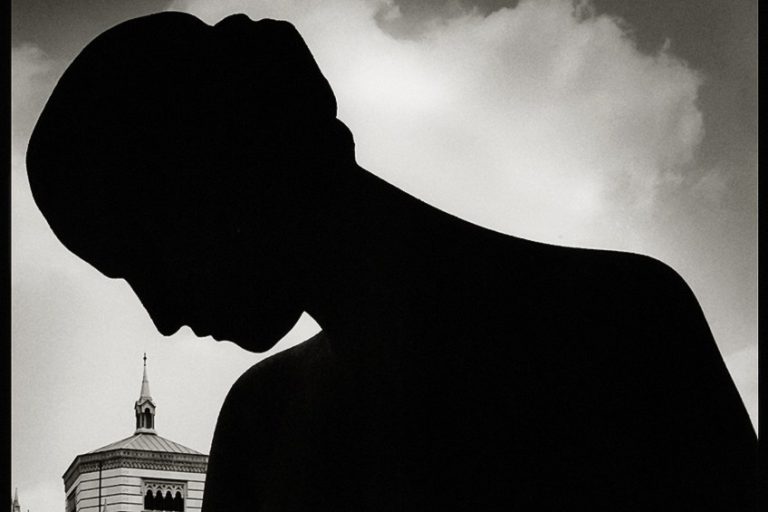What Is Still Life Photography? – Types of Still Life Photography
What is still-life in photography and are there different types of still-life photography? As a modern interpretation of traditional still-life painting, still-life photography shares the same subject matter – the depiction of an arrangement of inanimate objects. There are various types of still-life photography, such as food photography, product photography, and tabletop photography. This article will explore various examples of still-life photography techniques, as well as share helpful still-life photography ideas and tips.
Table of Contents
What Is Still-Life Photography?
Artists have been producing still-lifes for many centuries, although, most of that time it was through the medium of painting. Traditional still lifes would feature objects arranged into an aesthetically pleasing composition. Today, however, types of still-life photography range from items meticulously placed on a tabletop, to photos of products, food, and many others.
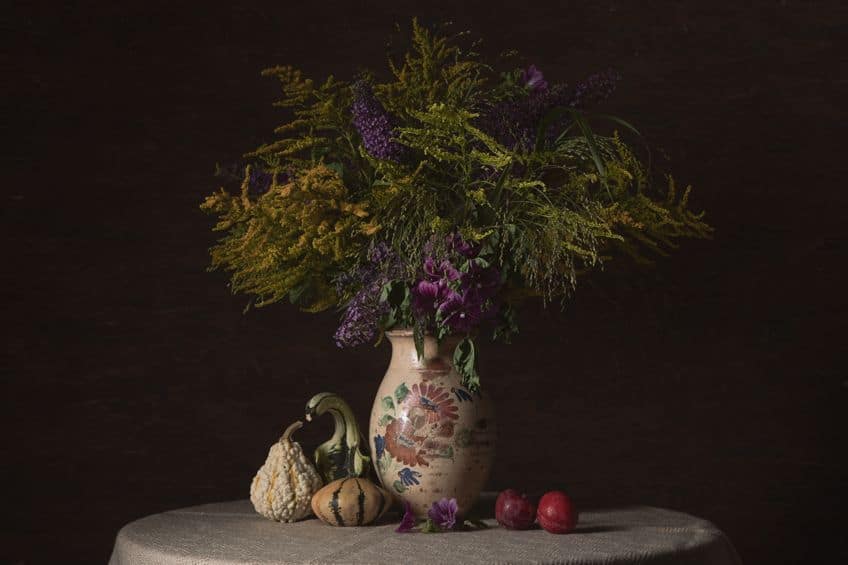
It is unique among other photography styles as it offers new photographers great opportunities to hone their skills and techniques. Unlike many other styles, still-life photography usually occurs in a very controlled environment, allowing photographers to have greater control of the lighting, subject, angles, and background. It’s the perfect style to explore and experiment with if one is interested in being a commercial photographer, as it shows you how to present your subject matter (or product) in the best possible way.
The History of Still Life Photography
When still life first originated as a style of painting, the aim was to depict objects that were no longer living or inanimate, such as dead game birds, seashells, picked flowers, fruit, etc. It was a style that both celebrated the joys of life as well as its transitory and fleeting nature. These works were, therefore, viewed as allegorical pieces that serve to remind us of our own fleeting existence. The style then emerged through the medium of photography in the early years of the 19th century, when people first started arranging and capturing images of various objects in a studio.
William Henry Fox Talbot is often cited as one of the first photographers to pioneer the use of photography to capture still-life compositions. He produced some of the earliest photos in this style, arranging objects such as flowers and fruit on a tabletop and then photographing them.
His photographs were meticulously arranged, with an emphasis on establishing an impression of harmony and balance between the objects. Talbot’s still-life photography was characterized by its minimalism and attention to detail, capturing everyday objects with natural light. Edward Steichen, one of the most prominent photographers of the early 20th century, was another significant individual in the history of still-life photography. His still-life photographs were admired for their elegant simplicity, and he used dramatic lighting to add texture and dimension to his photos. Through years of experimentation in creating his aerial, studio, editorial, and commercial images,

Edward Steichen created a pioneering, highly influential approach to the medium. Initially educated as a painter, Steichen created images early in his career that incorporated the soft focus, ambient composition, and retouched elements that were evident in the Pictorialist style of artists such as Alfred Stieglitz. Still-life photography started to develop into a more experimental and avant-garde style in the mid-20th century, with artists such as Irving Penn and Man Ray pushing the boundaries of what was thought to be possible within the genre. Man Ray was most known for his surrealist still-life photography, which typically depicted weird and unusual objects arranged in strange and unnerving ways.
Techniques and Equipment
If you are thinking of trying out still-life photography for yourself, then you will find this next section particularly helpful. As with any type of photography, there are certain techniques and pieces of equipment that can make your still-life photos look more professional and pleasing to the eye. Let’s look at the techniques that can produce the best still-life photographs.

Lighting
The quality of the light is one of the most significant factors to consider in still-life photography. Soft, diffused light is generally used for still-life photography because it adds rich texture and depth to the subject. This can be done by using reflectors or diffusers, or by placing the object close to a window or any other potential natural light source. With still-life photography, the direction of the light is equally important. Side lighting can be applied to cast dramatic shadows and highlight texture, whilst backlighting can provide dimension and contrast. Front lighting, on the other hand, is sometimes used to produce a more uniform, balanced appearance.
Strobes, continuous lights, and speed lights are common types of artificial light sources typically utilized for still-life photography.
Composition
There are several techniques that photographers can utilize to make their works more visually appealing or to help establish a certain message or mood. Color coordination is one of the most crucial parts of still-life photography. You can produce a unified and visually appealing photo by selecting objects with complementary colors or designing a color scheme that complements the theme of the composition. You can also establish a sense of perspective by employing a shallow depth of field, experimenting with the blur and focus of the various objects in the composition, or using light and shadows to create a feeling of three-dimensionality. You can also experiment with materiality and texture, employing various textures and surfaces to enhance the contrast and make it more intriguing to look at.
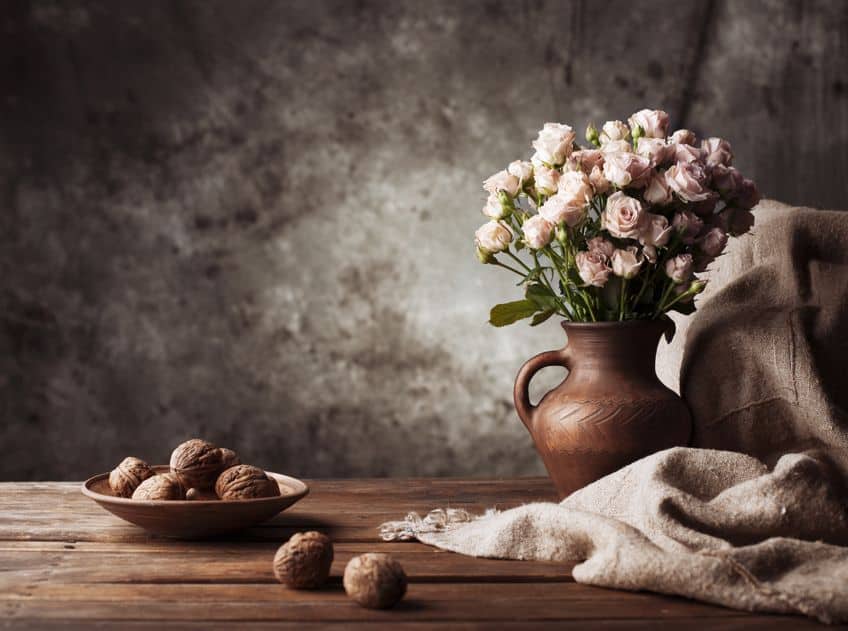
Backgrounds
Backgrounds are essential in still-life photography because they serve to establish the tone and atmosphere of the photograph. Your background needs to fit the theme of the overall piece, so for example, if you are taking a photograph of a natural soap product, you would most likely want the background to be of nature, with elements that make one feel revitalized, clean, and fresh. However, if it’s not a commercial product, but rather a work of art, then perhaps having a background that completely juxtaposes with the subject will accentuate the contrast between the two and make it more eye-catching or engaging.
You can also add visual interest to your still-life composition by incorporating textured backgrounds such as fabric or wood.
Cameras and Lenses
There is no one-size-fits-all solution for the best camera and lens for still-life photography. The appropriate camera and lens will largely be determined by a variety of considerations, including your personal preferences and shooting style, the sort of still-life photographs desired, and your budget. However, there are still some general guidelines that you can follow when looking to buy the appropriate equipment for still-life photography. Still-life photography generally necessitates a high degree of detail and clarity, thus a high-resolution sensor is essential.

Full-frame cameras, which have greater low-light performance and depth of field adjustment than crop-sensor cameras, are probably more suited to still-life photography. The lens you select will be determined by the sort of still-life photographs you plan on making. A macro lens is perfect for capturing small objects at close range, whereas a normal prime lens is good for general still-life photography. Image stabilization can be advantageous for still-life photography, especially when using a longer lens or working in low light. To help keep your images clear and stable, consider getting a camera or lens with built-in stabilization.
Props
Photographers will usually choose props with complementary or contrasting colors to create a visually engaging shot. Balance is another key factor to consider when choosing props. You should position props in such a manner that the image has an impression of balance, employing props of different shapes and sizes to add visual interest. Another effective technique employed by still-life photographers is repetition.
You can create a feeling of movement, dynamism, and rhythm in your images by repeating shapes or colors throughout the composition.
The Various Types of Still Life Photography
In comparison to many other photographic genres, such as portrait or landscape photography, this genre allows one more freedom in the placement of design elements inside a composition. Framing and lighting are crucial components of the composition in still-life photography. Yet, not all types of still-life photography are the same, and each different type offers something distinct. Here are a few examples of still-life photography types that you can try.
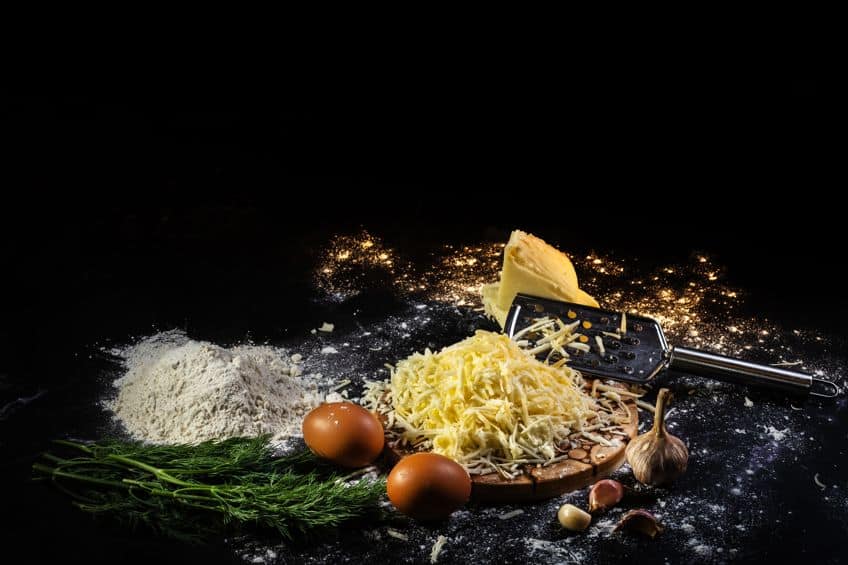
Food Photography
Food photography is a popular genre of still-life photography that is employed to make appealing still-life photos of food. It is a type of commercial photography used to take photos of products displayed in commercials, publications, packaging, menus, and cookbooks. Professional food still-life photography is a team effort that often includes a photographer, art director, prop stylist, food stylist, and assistants. Food photography is frequently – and often controversially – used in advertising to accentuate the desirability or proportion of the offered dish, particularly fast food. It is common practice to use non-edible materials to make food in photos look more appetizing.
William Henry Fox Talbot’s 1845 daguerreotype of peaches and pineapple was the earliest documented image of food as a subject.
Product Photography
Still-life photography of products is a sort of commercial photography in which goods are photographed, generally in a studio environment, with the goal of exhibiting the object in the most aesthetically pleasing way possible. The photographers use a variety of techniques and equipment to produce a visually appealing shot that emphasizes the object’s features such as form, texture, coloration, and functionality. The goal is to produce a picture that’s not just aesthetically impressive, but also informative and convincing, in order to persuade prospective customers to buy the product. A photographer also has to do a considerable amount of research to determine which props, backgrounds, and color palettes will appeal to the intended target market.

Tabletop Photography
Tabletop still-life photography involves capturing items that have been arranged on a tabletop or any other flat surface. This photographic style is usually used for creating appealing photos of little objects such as jewelry, flowers, or other ornamental items. The photographer has complete control over the content, lighting, and backdrop in tabletop still life photography, which lets them establish a certain atmosphere or theme for the photograph. To produce the intended look, they can employ a variety of techniques and devices, such as varied lighting settings, lenses, or props.
Advertising, promotion of products, and artistic expression may all be achieved with tabletop still life photography and photographers that specialize in commercial photography make use of it often.
Found Object Photography
The subject matter of found object still life photography is things found in everyday life. Instead of choosing standard still-life things like fruit, bouquets, or vases, the photographer searches for intriguing and distinctive objects in their environment and displays them in a visually pleasing manner. It can serve as a very innovative and experimental approach to creating still-lifes, allowing you to draw inspiration from your surroundings and challenge the audience’s ideas of what constitutes a still-life photograph. Found object still life photography can employ practically any object, from natural elements like foliage and stones to discarded objects like bottles or rusting metal. The purpose of found object still-lifes is to produce an image that conveys a narrative or provokes an emotion. It allows the photographer to express their originality and unique take on the world.
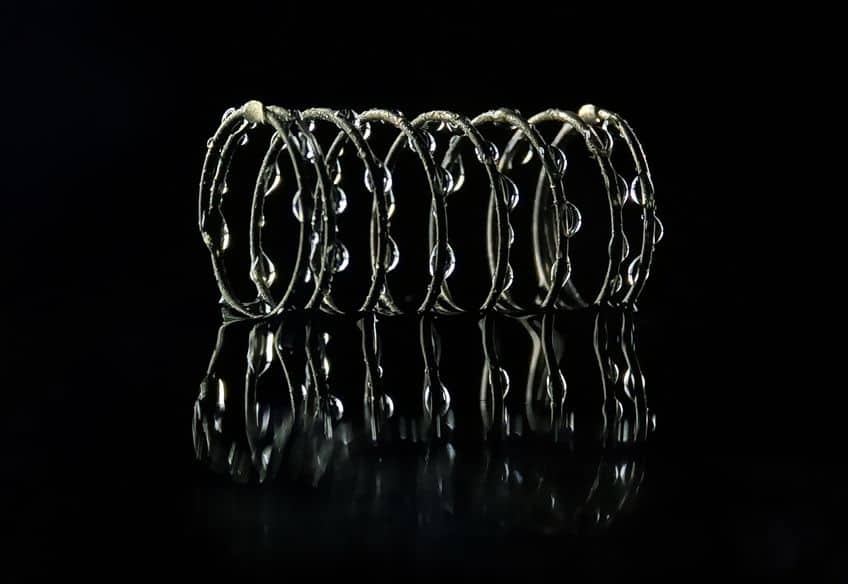
Storytelling Through Still-Life Photography
There are many various ways that still-life photography can convey a narrative, and photographers use a variety of distinct storytelling techniques in order to do so. One of those ways is through conceptual storytelling. In this method, the photographer represents a thought or concept through still-life objects. A picture of a withered flower, for instance, could symbolize the passage of time. The various elements in the photograph are thoughtfully selected to produce a visual metaphor or analogy that conveys a specific message, even though they are not necessarily directly related to the concept they represent. Photographs of conceptual still life may be used to explore a variety of subjects, from social challenges to personal feelings.
One of the main advantages of conceptual storytelling is the ability to produce a potent image that conveys a message without being overt or blatant. It is up to the viewer to interact with the image and decipher its message.

Photographers can also use emotional storytelling. Emotional storytelling can be an effective method for those who wish to delve into the human experience and elicit strong emotions in their audience. It can also be employed in business or advertising situations to establish a mood or ambiance associated with a particular brand or product. To produce an emotive still-life shot, you must consider the objects used, the lighting and color schemes, as well as the image’s composition. A photograph of a withered flower, for instance, could be treated with soft, warm light to evoke feelings of sorrow or nostalgia. A photo of a vivid bunch of flowers, on the other hand, could be illuminated with bright, dynamic light to evoke feelings of happiness and joy.
Tips for Creating Excellent Still-Life Photography
Many people associate still-life photography with beginner’s photography classes as it is one of the first genres given to students for an assignment. But, this is because it is a genre that requires an understanding of composition, lighting, storytelling, and all the other elements that make a great photograph. The controlled environment allows you to experiment and learn how to create consistently good images, and by mastering still-life photography, it will be easier to master other photographic genres.
We have covered the history, techniques, equipment, and types of still-life photography, but before you go, let’s take a look at a few useful tips and still-life photography ideas that will help you on your way to becoming a better still-life photographer.
Treat It Like a Painting
It’s better to view still-life artwork as paintings rather than photographs. Most people think of a photograph as something that is shot instantly. But everyone understands that paintings take time. Everyone appreciates the fact that artists have complete control over what they put on their blank canvas. That, in essence, is the core of still life photography, and something to use to your advantage – you have all the time to create the perfect arrangement, backdrop, and lighting and nothing is left to chance.
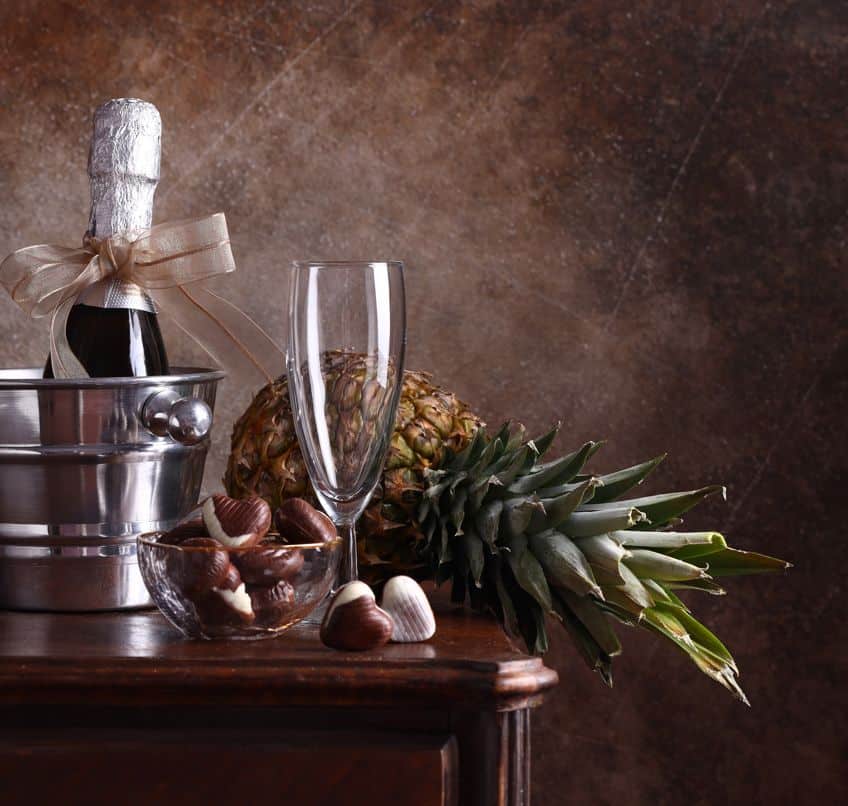
Light Control
One of the advantages of photographing still lifes is the freedom to rearrange the elements to your satisfaction. Sure, you can move the objects around in the arrangement, yet, more significantly, you can spend however much time you want perfecting the lighting. To begin, use the light to guide the audience’s attention through the image. Light sources that emerge from the left cause the observer’s eyes to move through the image as if they were reading a book.
If the shadows are perhaps a little too intense, try maybe adding another light source or diffusing the one you have.
Try Black and White Still-Lifes
When color is removed from a composition, other aspects fill in the gaps: textures, contrasts, tones, and forms all become more significant. Therefore, by producing black and white still lifes, you will learn how to incorporate those other elements and principles into your work and not just rely on color. Many photographers regard the production of black-and-white photos as something that can be done in post-production, but this is frowned upon by those who traditionally take black-and-white photos. They believe that a photo should be planned from the beginning to be either color or black and white, as every other creative decision after that will be based on that initial choice.
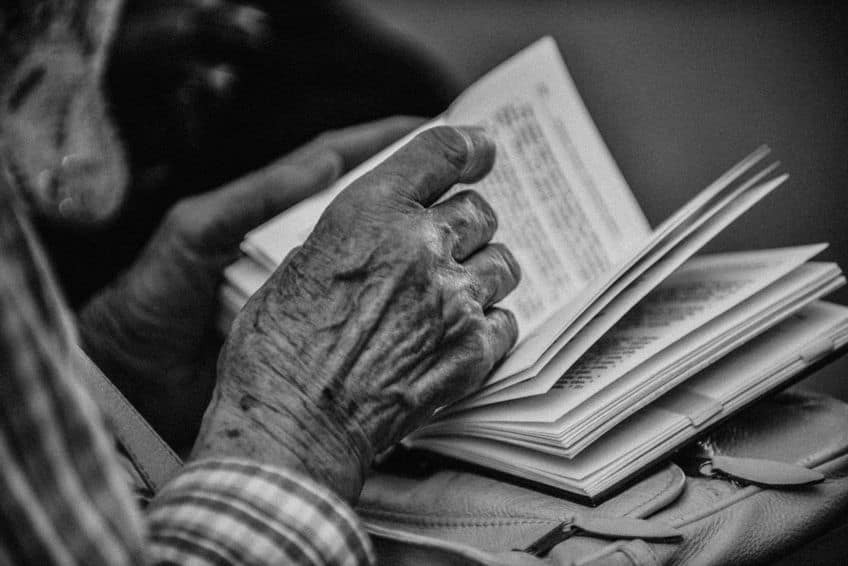
What is still life in photography? While you may think of yourself as a photographer that would rather be taking action shots of sports events, or of fashion shows, learning how to master still-life photography will actually go a long way in teaching you techniques that will make you a better photographer overall. If you are looking to be a commercial photographer, then understanding the techniques that will make a product stand out in an image will be exceptionally beneficial. Any photographer who can come up with unique and exciting still-life photography ideas will never be short of work!
Frequently Asked Questions
What Is Still-Life Photography?
You see examples of still-life photography around you every day without probably even realizing it. Like still-life painting, it is a visual depiction of an inanimate object or group of inanimate objects that have been arranged in a pleasing manner. Therefore, anything from an artistic photo of a fruit or flower arrangement, to an Instagram post of a cappuccino on a table is a still-life photograph.
Can You Make Money With Still-Life Photography?
All companies need to have photos of their products that make them look as appealing as possible. Therefore, there is always a potential market for product still-life photography, or taking photos of food for restaurants, for example. Many photographers even manage to make money with artistic still-life photographs of found objects. Either way, learning how to take still-life photographs will help you learn the fundamentals of composition, lighting, and lenses.
Jordan Anthony is a film photographer, curator, and arts writer based in Cape Town, South Africa. Anthony schooled in Durban and graduated from the University of the Witwatersrand, Johannesburg, with a Bachelor of Art in Fine Arts. During her studies, she explored additional electives in archaeology and psychology, while focusing on themes such as healing, identity, dreams, and intuitive creation in her Contemporary art practice. She has since worked and collaborated with various professionals in the local art industry, including the KZNSA Gallery in Durban (with Strauss & Co.), Turbine Art Fair (via overheard in the gallery), and the Wits Art Museum.
Anthony’s interests include subjects and themes related to philosophy, memory, and esotericism. Her personal photography archive traces her exploration of film through abstract manipulations of color, portraiture, candid photography, and urban landscapes. Her favorite art movements include Surrealism and Fluxus, as well as art produced by ancient civilizations. Anthony’s earliest encounters with art began in childhood with a book on Salvador Dalí and imagery from old recipe books, medical books, and religious literature. She also enjoys the allure of found objects, brown noise, and constellations.
Learn more about Jordan Anthony and the Art in Context Team.
Cite this Article
Jordan, Anthony, “What Is Still Life Photography? – Types of Still Life Photography.” Art in Context. June 2, 2023. URL: https://artincontext.org/what-is-still-life-photography/
Anthony, J. (2023, 2 June). What Is Still Life Photography? – Types of Still Life Photography. Art in Context. https://artincontext.org/what-is-still-life-photography/
Anthony, Jordan. “What Is Still Life Photography? – Types of Still Life Photography.” Art in Context, June 2, 2023. https://artincontext.org/what-is-still-life-photography/.


